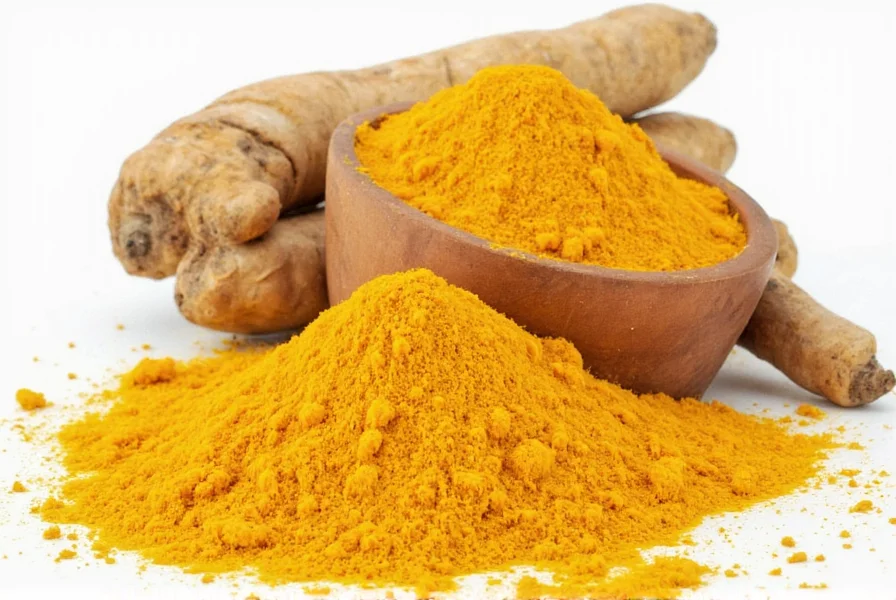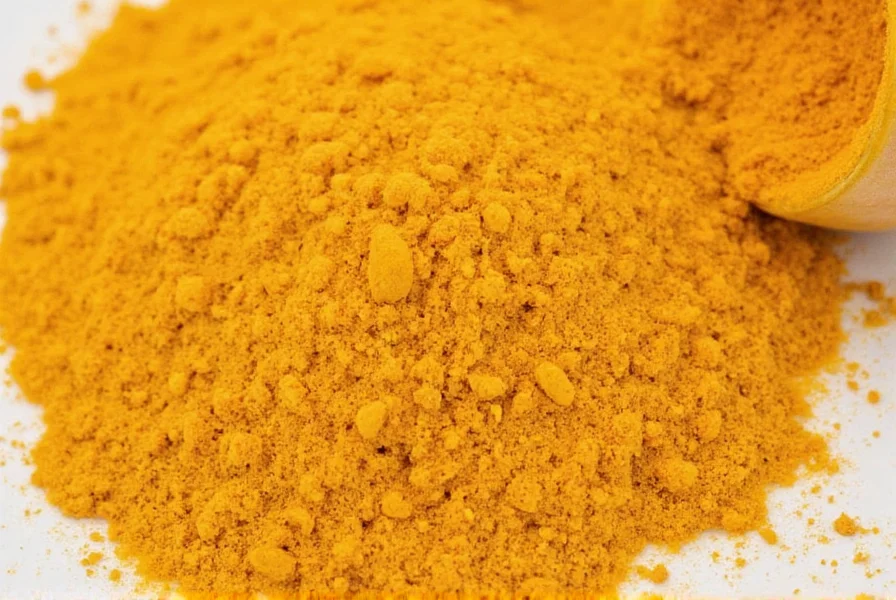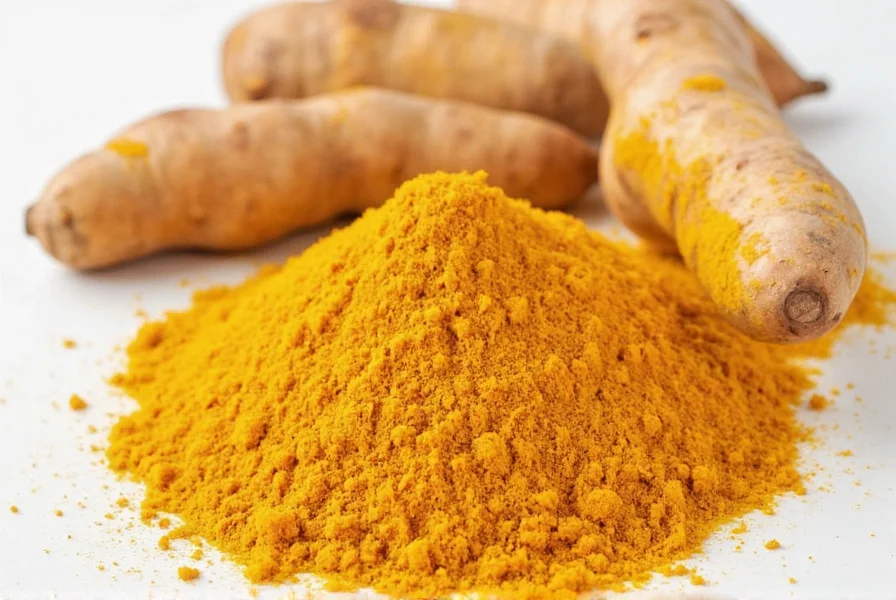When searching for turmeric in Spanish, you'll consistently find that 'cúrcuma' is the correct term. Unlike some ingredients that have regional variations, this translation remains remarkably consistent throughout the Spanish-speaking world. Whether you're shopping for spices in Madrid, Mexico City, or Buenos Aires, asking for 'cúrcuma' will get you exactly what you need.
Understanding the Spanish Word for Turmeric
The word 'cúrcuma' comes directly from the Latin 'curcuma,' which itself has origins in Arabic and Sanskrit. This linguistic journey explains why the term remains so consistent across Spanish dialects. The accent mark on the 'u' indicates that the stress falls on the second syllable: koor-KOO-mah.

Regional Usage of Cúrcuma
While 'cúrcuma' is universally understood, there are some interesting regional nuances to be aware of:
| Region | Usage Notes |
|---|---|
| Spain | Commonly used in rice dishes and some traditional medicines |
| Mexico & Central America | Increasingly popular in health foods and traditional remedies |
| Caribbean | Used in some traditional healing practices and culinary applications |
| South America | Gaining popularity as a health supplement in urban areas |
Common Misconceptions About Turmeric in Spanish
Many English speakers searching for how to say turmeric in Spanish mistakenly believe it's 'azafrán' (saffron). While both are yellow spices, they're completely different:
- Cúrcuma - Turmeric, more affordable, earthy flavor
- Azafrán - Saffron, one of the world's most expensive spices
This confusion likely stems from both spices producing yellow coloring in food. When asking for turmeric at a market, be specific: '¿Tiene cúrcuma, no azafrán, por favor?'
Related Vocabulary for Turmeric in Spanish
If you're discussing turmeric in Spanish-speaking contexts, these terms will be helpful:
- Raíz de cúrcuma - Turmeric root
- Cúrcuma en polvo - Turmeric powder
- Especia - Spice
- Colorante natural - Natural coloring agent
- Propiedades medicinales - Medicinal properties
Cultural Context of Cúrcuma
While turmeric isn't traditionally central to most Spanish-speaking cuisines as it is in South Asian cooking, its popularity has grown significantly in recent years. Many health-conscious consumers in Spanish-speaking countries now seek 'cúrcuma' for its purported anti-inflammatory benefits.
In traditional Mexican medicine (medicina tradicional), some communities have incorporated turmeric into their practices, though it's not as historically significant as native plants like epazote or hierba buena.

Practical Usage Examples
Here are some practical examples of how to use 'cúrcuma' in Spanish sentences:
- 'Necesito comprar cúrcuma para mi receta de arroz.' (I need to buy turmeric for my rice recipe.)
- 'La cúrcuma le da un color amarillo brillante a los alimentos.' (Turmeric gives food a bright yellow color.)
- '¿Dónde puedo encontrar cúrcuma fresca cerca de aquí?' (Where can I find fresh turmeric near here?)
Why This Translation Matters
Knowing the correct term for turmeric in Spanish becomes particularly important when:
- Traveling to Spanish-speaking destinations and shopping for local ingredients
- Following Spanish-language recipes that call for this spice
- Discussing health supplements with Spanish-speaking practitioners
- Reading product labels in Spanish-speaking markets
Unlike some culinary terms that vary significantly by region, 'cúrcuma' provides a reliable translation that works across all Spanish dialects - making it one of the more straightforward spice translations to remember.
Frequently Asked Questions
Is cúrcuma the same as azafrán in Spanish?
No, cúrcuma (turmeric) and azafrán (saffron) are completely different spices. While both produce yellow coloring, saffron comes from crocus flowers and is significantly more expensive. Turmeric has a more earthy flavor profile compared to saffron's distinctive aroma.
How do you pronounce cúrcuma in Spanish?
Cúrcuma is pronounced koor-KOO-mah, with the stress on the second syllable. The 'c' sounds like 'k', the 'u' is pronounced like 'oo' in 'book', and the accent mark indicates where the stress falls.
Does the word for turmeric change in different Spanish-speaking countries?
No, 'cúrcuma' is the standard term used across all Spanish-speaking regions. Unlike some food terms that vary by country, this translation remains consistent whether you're in Spain, Mexico, Argentina, or any other Spanish-speaking location.
Can I use cúrcuma in traditional Spanish recipes?
While not traditional in most Spanish cuisine, modern chefs are incorporating cúrcuma into contemporary dishes. It works well in rice dishes as a more affordable alternative to saffron, though it will impart a slightly different flavor profile. Many health-conscious Spanish speakers now use it in smoothies and wellness drinks.
What's the difference between turmeric root and powder in Spanish?
In Spanish, 'raíz de cúrcuma' refers to turmeric root, while 'cúrcuma en polvo' means turmeric powder. When shopping, specify which form you need as some markets carry only one version. Fresh root typically has a stronger flavor and is used in traditional medicine preparations.











 浙公网安备
33010002000092号
浙公网安备
33010002000092号 浙B2-20120091-4
浙B2-20120091-4